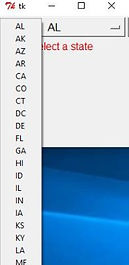FLOOD RISK MAPPING USING REALTIME WATER LEVEL: STUDY OF FLORIDA
Floods are among the most frequent and costly natural disasters in terms of human and economic loss. In the past few decades the frequency and impacts of floods has drastically increased because of environmental degradation. Floods are difficult to monitor on large scales, because they are determined by local conditions such as precipitation, slope of terrain, drainage network, protective structures, land cover, and other factors. (Klemas, 2015)
As a part of flood awareness it is also important to know current flood risk levels which might impact the areas in near future. The governing authorities need to keep track of the changing water levels and their possible impacts to be prepared for any probable flooding.
The study aims to:
-
Delineate flood risk levels of the study area that lets the user define the weights for the factor layers
-
Compare the current water level in the area with flood risks.
The methodology followed in the study is divided into 3 parts,
-
Data preparation
Before starting any data preparation or analysis environment and workspace were set for the study. Workarea was mapped to the folder location. Using environment settings cell size was set to 30, processing extent was set to fit the extent of the study area and WGS 1984 was set as the spatial reference.
Data sets used to accomplish the study are:

-
Flood Susceptibility mapping
users were prompt to enter the weights for each factor layer. Using these weights weighted overlay calculation was performed.
-
Current Flood risk analysis
Current flow conditions were used to understand current flood risk in the study area. In order to understand current flow levels, UGSG water watch API was used. This JSON object was then used to create a point feature class. These points were interpolated to the extent of the study area.





The model can act as a starting point for monitoring current flood risk in areas with high susceptibility. The automation process helps in conducting multiple iterations with different weights and different interpolation techniques which can then be compared to get the most optimum results. The extent of the study can be expanded to more accurate interpolation techniques that would let the model produce more accurate results. The model can be expanded to more interpolation and accurate techniques for water levels. The study lacks geomorphological parameters that greatly impact flood characteristics.
Take a closer look at the repository HERE.
WHERE IS THE VIEW?
